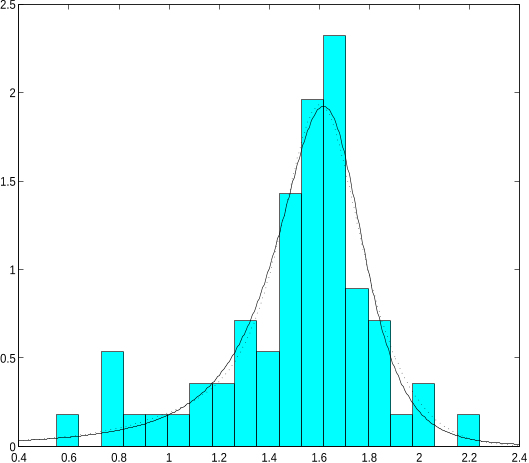













657 citations
...This important problem has been examined byWang et al. (2004) and Ma & Genton (2004), whose results can be summarized as follows; in their formulation, the term Gfw(x)g in (12) is replaced by the perturbation function p(x), satisfying conditions (14)....
[...]
547 citations
352 citations
234 citations
...One of these extensions refers to the family of flexible skew-symmetric (FSS) distributions introduced by Ma & Genton (2004) with density fFSS(x ; ξ, ω, α1, . . . , αK ) = 2ω−1 f0(z) G{PK (z)}, x ∈ R, (5) where f0 and G are symmetric univariate density function and distribution function,…...
[...]
...Other forms of skew-t distribution have been considered by Jones & Faddy (2003), Sahu et al. (2003) and Ma & Genton (2004)....
[...]
218 citations
1,174 citations
1,130 citations
...…& Dey, 2001; Azzalini & Capitanio, 2003; Jones & Faddy, 2003; Sahu et al., 2003), skew-Cauchy (Arnold & Beaver, 2000) and other skewelliptical ones (Azzalini & Capitanio, 1999; Branco & Dey, 2001; Sahu et al., 2003) can be represented by the SS distribution (1) with appropriate choices of f and p....
[...]
...If each term has an odd order (all ks are odd), then the polynomial is called an odd polynomial, whereas if each term has an even order (all ks are even), it is called an even polynomial....
[...]
1,046 citations
936 citations
...The construction of the subset is through polynomials, which has a similar flavour as the semi-non-parametric (SNP) representation proposed by Gallant & Nychka (1987) ....
[...]
...The construction of the subset is through polynomials, which has a similar flavour as the semi-non-parametric (SNP) representation proposed by Gallant & Nychka (1987)....
[...]
629 citations
...…& Dey, 2001; Azzalini & Capitanio, 2003; Jones & Faddy, 2003; Sahu et al., 2003), skew-Cauchy (Arnold & Beaver, 2000) and other skewelliptical ones (Azzalini & Capitanio, 1999; Branco & Dey, 2001; Sahu et al., 2003) can be represented by the SS distribution (1) with appropriate choices of f and p....
[...]
...Similarly, multivariate distributions such as skew-t (Branco & Dey, 2001; Azzalini & Capitanio, 2003; Jones & Faddy, 2003; Sahu et al., 2003), skew-Cauchy (Arnold & Beaver, 2000) and other skewelliptical ones (Azzalini & Capitanio, 1999; Branco & Dey, 2001; Sahu et al., 2003) can be represented by…...
[...]